Beautifully restored and detailed 1936 Commer 8cwt van
Posted by Chris Graham on 1st December 2023
Brian Culpan tells the story of a 1936 Commer 8cwt van, and the events which secured the survival of this now rare and desirable model.
Photography: WB & Sons
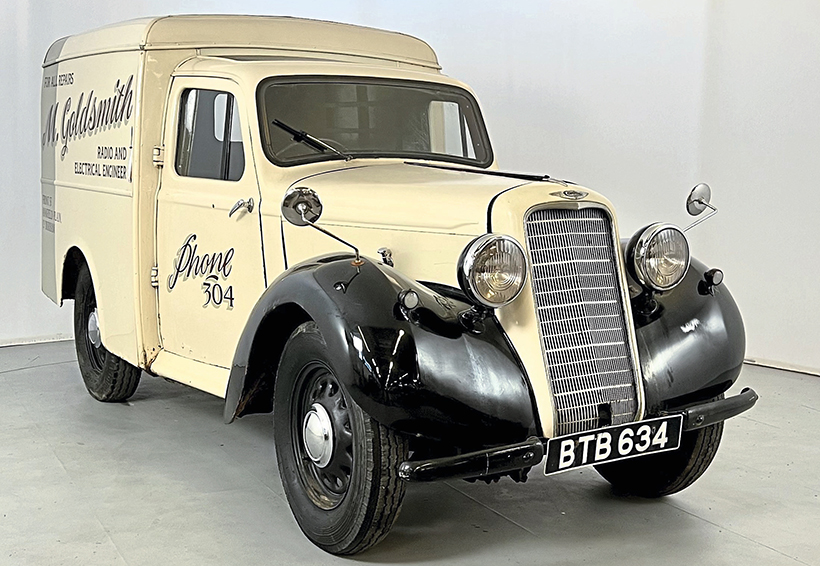
Commer 8cwt van: A light-colour respray has cheered up this elderly van.
When the Rootes Group introduced its first small van, based on the Hillman Minx 10hp saloon, it couldn’t have known just how popular this would prove to be. The Minx range lasted a very long time; with small cosmetic improvements made every few years, just to keep it fresh. Despite these small Commer vans being bought in large numbers, very few have survived into preservation. This despite the later chassis having been made ‘twist proof’ by boxing in the channel sides to make it six times stiffer than before. This is an account of how one extremely rare 1936 model was found, rescued and then restored. Brian’s original article was prepared in early 1997, then published in Vintage Commercial Vehicles in the October that year, in issue No. 094.
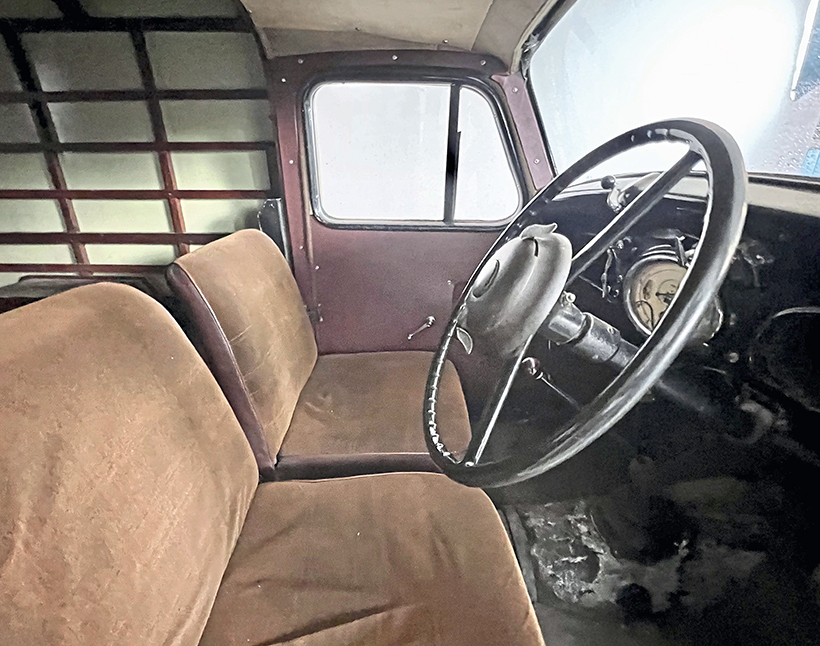
Cab seats are not the uncomfortable originals; look at the size of that wheel!
The late Bradley Wilson was a paramedic and worked at the Emergency Ambulance Station at Kendal, in the magnificent Lake District, and, when on shift, he was on call for any situation involving the nearby M6 motorway or surrounding area. Many years ago, when I first called in to talk to Bradley (at the ambulance station – just before his shift started), usually the public don’t go to the station in person, the contact is via a 999 call! After explaining the reason for my visit, we discussed the van; the restoration was almost complete. A few minor details needed finishing off, such as the fitting of new number plates, the bonnet catches, chrome-plating the headlamp rims and connecting up the windscreen flexible drive, all amounting to about two day’s work.
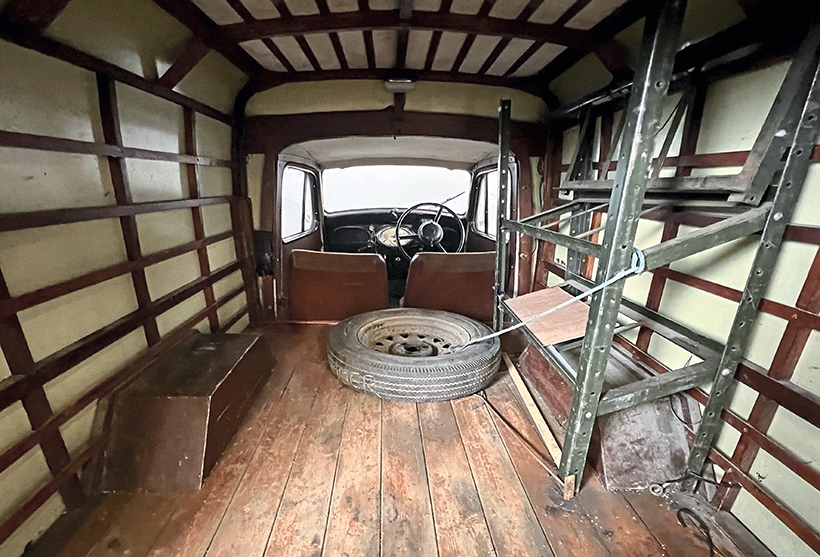
Body framework is still in good condition.
Unfortunately, I couldn’t see the van at that time as it was at Bradley’s home, hidden behind a stack of boxes. His son had just got married, and was getting his things together before moving them to his new house. I did see many photographs, though, taken as work progressed, and was amazed at what Bradley had achieved so far, transforming a wreck into a very smart looking van that could challenge any other on the rally field for the Concours D’Elegance award. I felt that I must see the van when it was finished and take some photographs.
Bradley had bought the van about five years previously, from an advert in a local paper – but the advert only described the vehicle as an ‘8cwt van’ – no mention of the make! To get that information, Bradley had to ring the seller. It was, in fact, a Commer 8cwt van, first registered on 7th July, 1936 (the almost identical but later, 1937 models can be recognised by the five bright-chromed strips added across the mesh grille).
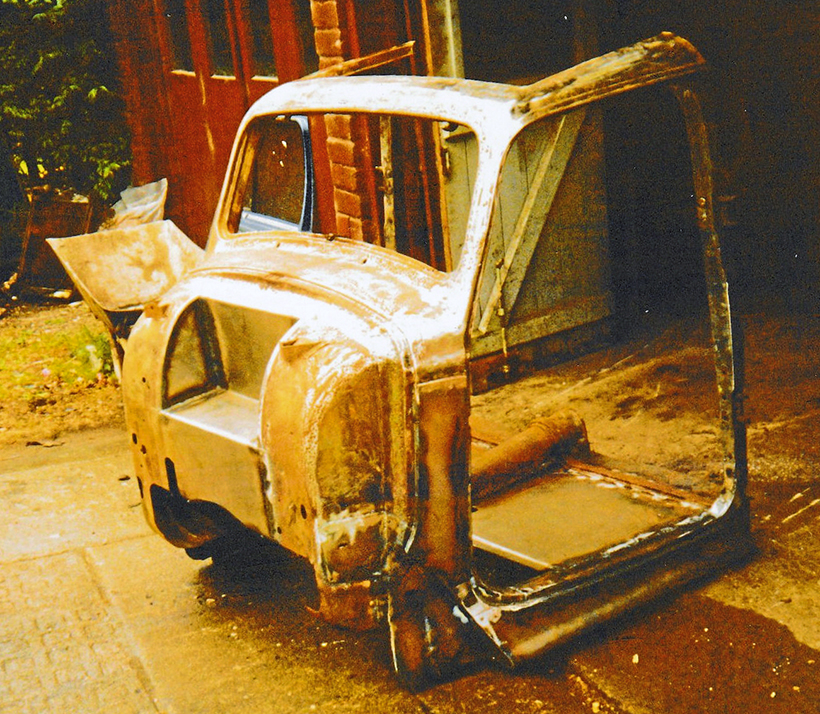
Cab section came from the monocoque saloon and needed much patching.
Brad insisted on seeing the vehicle first – his son was keen for his father to clinch the deal over the phone – but fatherly experience and good sense prevailed. They travelled to Newby Bridge on the road to Barrow in Furness, about 10 miles away, to view it. The van was in a very dilapidated state, and the rear doors were missing. The petrol tank had rotted through, and the entire rear bodywork needed extensive repairs. A large wooden plank had been fixed across the rear doorway to bolster the rear bodywork (the rear doors were both missing), below was a home-made angle iron bumper, and a roughly-cut piece of aluminium sheet was clumsily attached to the body side to hide a rotted panel. The asking price was £550, a deal was struck for £50 less, the seller told them later that he subsequently had many enquiries, and could have sold the van several times over.
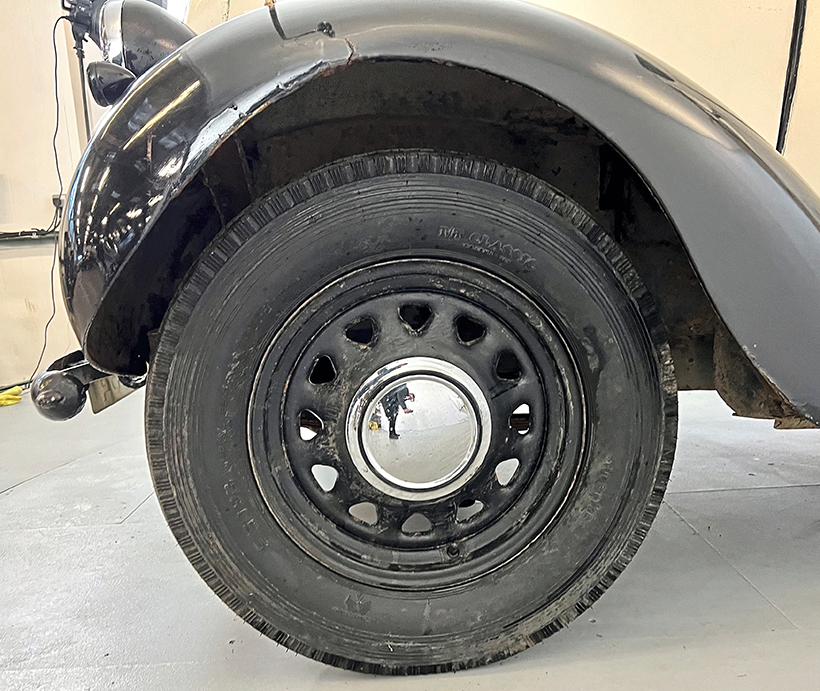
Chromed hubcaps were one of the few luxuries given to commercials.
When the vehicle was brought home on a borrowed recovery trailer, the neighbours thought that Brad was starting a scrapyard business (he already had several cars undergoing restoration), or that he had finally ‘flipped his lid’. His father-in-law’s advice was to take the remains of the tatty van around to the scrapyard before it closed, and while he still had use of the trailer! But Brad was one of those visionary people – who can look at the ugly, clumsy, caterpillar and see the beautiful, delicate, butterfly waiting to emerge; someone able to see the potential for transforming the pile of scrap into the finished vehicle.
The old van had stood on flat tyres for some time before Brad came to rescue it. They were well inflated for the move, and one day when it was parked in the sunny back garden, two of the three very bald tyres exploded – the thin, weakened walls could no longer contain the over-pressurised inner tubes. The fact that Brad still had neighbours shows how tolerant they were, and how much they really thought of him, despite everything!
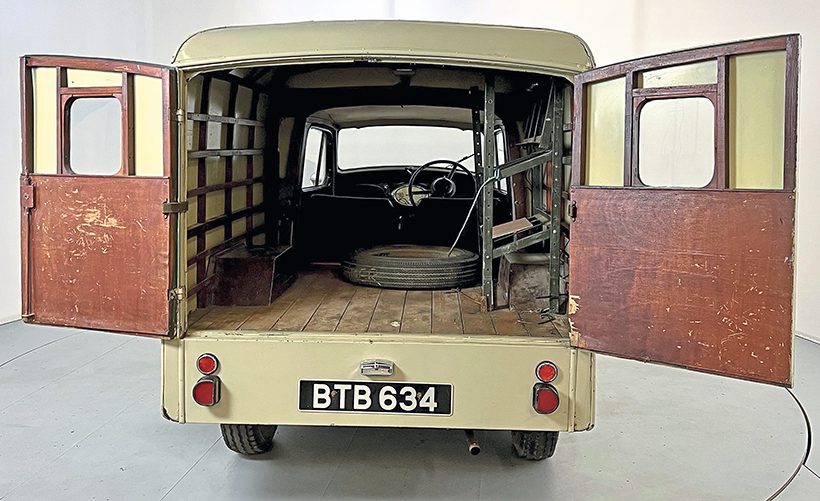
Easy access for loading bulky items.
When I saw the photographs of the van as it had been found, the only remaining part of the number plate had the letters ‘BT’ on it. I immediately thought of an East Yorkshire registration – but the full index mark is BTB 634! So, this delightful little van started life in the county of Lancashire, possibly at Workington – but the very early history is uncertain (does anyone recognise the van?). The old buff logbook records the van being red originally, then blue. What’s known is that it was new to a bakery in Grange-over-Sands, then passed to a builder JT Farrer of Newton in Cark and Greenodd – he may also have used it for paraffin deliveries, and his livery still existed on the van when it was rescued by an enthusiast. Unfortunately, this guy hadn’t got around to starting the restoration, and so advertised the van – that’s when Bradley bought it.
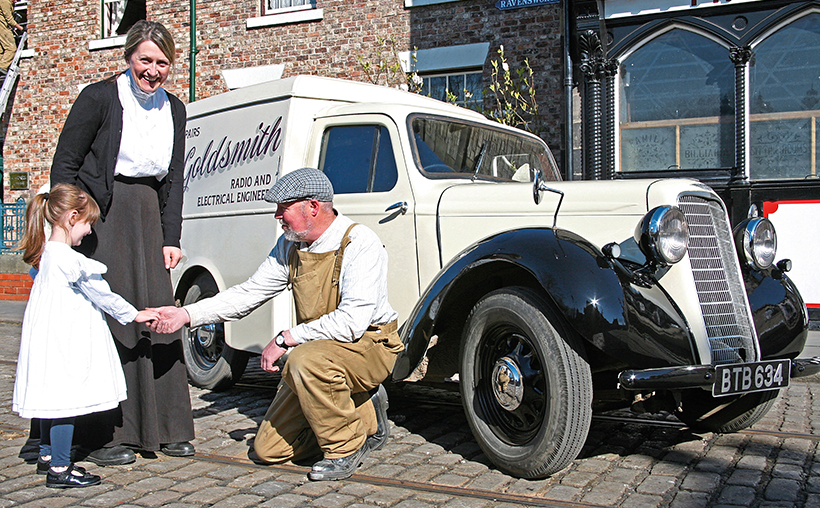
The magnificent Commer van in a period setting (Beamish Museum).
It’s thought to have been taken off the road in about 1960 – just before MoT tests for 10-year-old vehicles started (voluntarily in late 1960, but compulsory from early 1961), possibly because it just wouldn’t have passed even the then simple tests of lights, brakes and steering. The last tax disc dates from this time, thus confirming the suspicion. In fact, it was taxed for the last time on 16th April, 1959, for £4-2-6 (expiring 30th June that year), but the disc perforations hadn’t been broken, indicating that it had never been displayed properly on the windscreen. Probably, it was considered too costly to put the van right, with its tatty bodywork and four bald tyres, with three looking like slicks, it’s not surprising! Can you imagine anyone driving the van in that state on its last day of use?
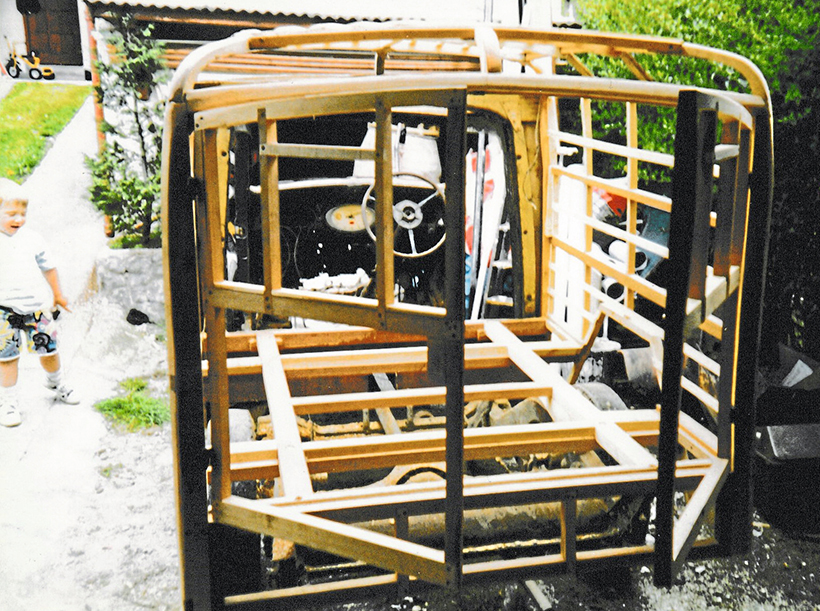
Extensive repairs to the body frame.
At first Bradley thought that only the rear body frame joints themselves would need replacing but, as is often the case, first impressions were over optimistic! After removing the outer panels, he decided that all the framework should be renewed. This was done and everything was given several coats of protective varnish – along with the new timber load area floor.
The battery recess in the scuttle/bulkhead hadn’t been completely covered by the bonnet during storage and, consequently, rain had dripped on it over a long period of time, rusting it through. Brad fabricated a new battery box, complete cab floor and cab sills, the latter consisting of some very complex curves! All were seam-welded to prevent corrosion starting in the crevice between spot welds.
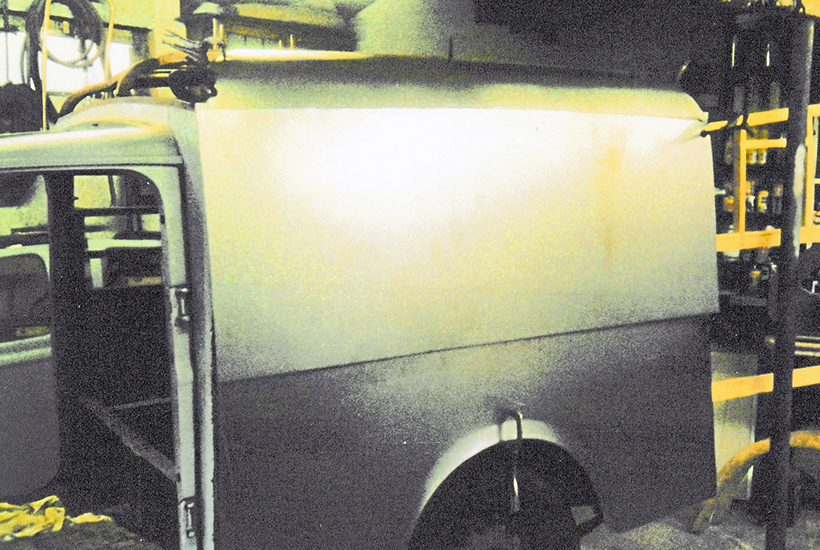
Replacement steel panels being fitted up.
One headlamp and its mounting foot were missing, another mounting had to be fabricated. This was done so well that it’s very difficult to tell which is the original, also a gearbox cover plate had to be made up by fabrication.
The petrol tank initially looked sound but, after shot-blasting, it was found to be peppered through, so a good replacement was found at an autojumble – described as being for a Ford Pop (but, in fact, was the correct Commer type)! A grille was also seen at an autojumble, and again the seller didn’t know what it was – but Brad did; and quickly snapped it up (but it has the five brighter chromed bars that were for 1937). The Commer radiator is very tall and weighty; two good ones were found on a stall and bought for £25 the pair! Very much a bargain as rebuilding one could cost as much as £100. Also, a windscreen frame (for £5) was another bargain.
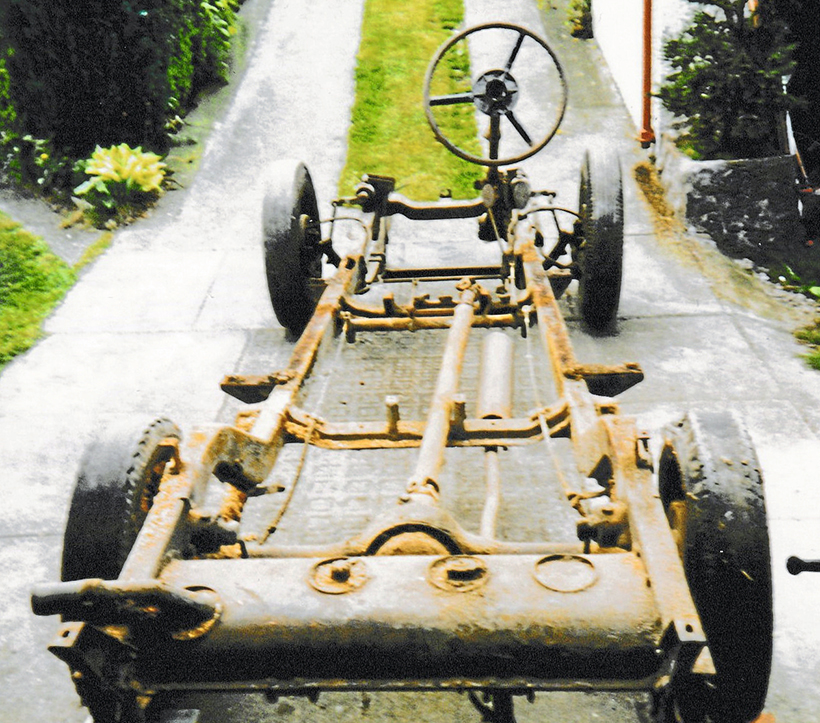
Stripped down to the bare chassis.
Worse news came on the mechanical side – the engine was seized solid. It was a reconditioned unit, and had not done many miles. With care it was eventually freed-off, however, several sticking piston rings had to be replaced, and their bores honed, rather surprisingly the engine had suffered very little wear.
The chassis is very substantial, with side frames of very deep section, but no cross-bracing. Fortunately, it was very sound and only needed one small hole, on the top flange on the passenger side, patching. Bradley was a very patient chap, and this is reflected in his work; which was of an extremely high, professional, standard – with great attention being paid to the smallest detail, sound workmanship, and precise, methodical working. Each sub-assembly, of say, the suspension, was carefully dismantled, cleaned, checked, and laid out ready for photographing as a reference to correct assembly later. Earlier in his working life Bradley was a highly skilled panel beater – and had worked on exactly this type and model of van! So, its construction had been familiar to him, and as he set to work on it; he remembered the techniques he’d used previously. His memory for detail helped greatly when the time came to fabricate the two rear doors from scratch – since neither the originals nor patterns existed! All doors close easily with a very satisfying ‘clunk’, and all sit square in their openings – with consistently even gaps.
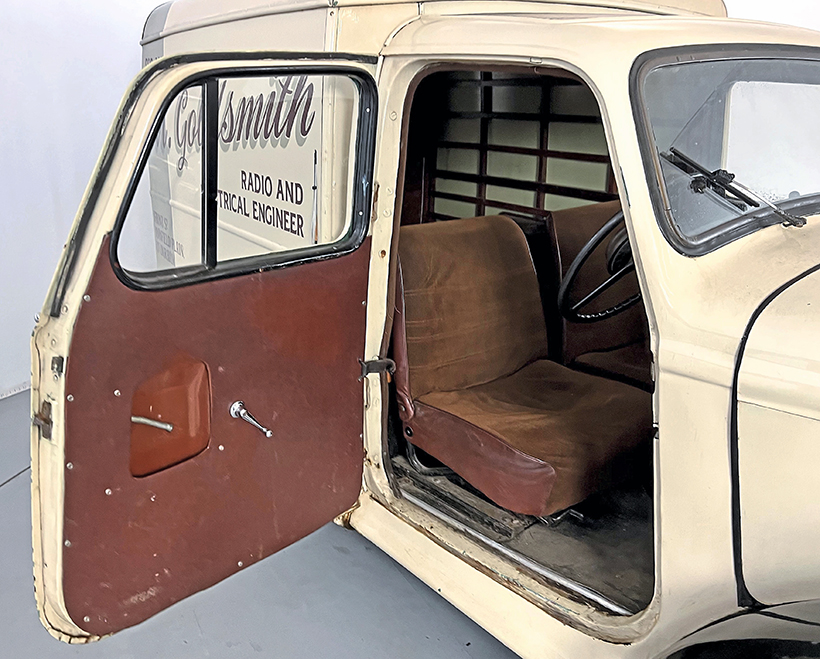
‘Suicide’, forward-opening cab doors were the norm.
Bradley visited many autojumbles; including Tatton Park and Beaulieu. Many parts were obtained by searching for them stall by stall. While making enquires for another particular part, at an autojumble, Brad was told ‘I haven’t got one of those, but I do have a complete good back axle for that type of van!’ Other items have come from large suppliers of old vehicle parts, such as: a new clutch centre plate, relined brake shoes, and steering box seals and bushes. The front hub bearings were found to be sound.
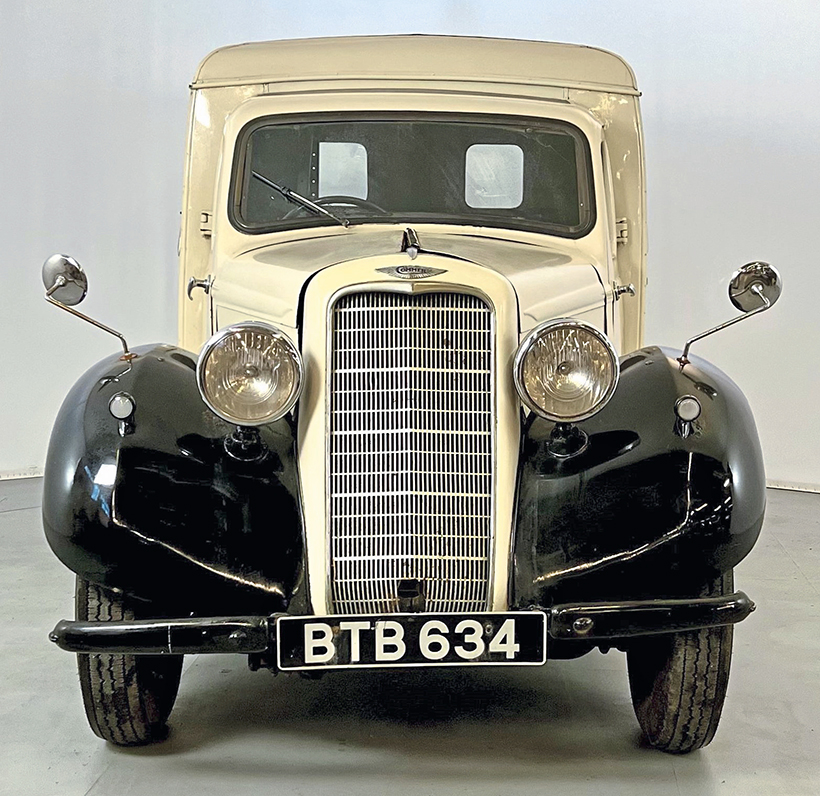
Separate headlamps, tall vertical grille, typical of pre-war styling.
A very reasonable £5 was paid for a windscreen frame seen leaning against a stall among other stuff, it is knowing exactly what you are looking for and being able to recognise it when almost disguised among other parts. Does anyone know what the windscreen wiper motor looks like, where and how it fits? One is desperately needed to finish the van off, but it is difficult for Brad to search the autojumble stalls not knowing what he is looking for. The van’s chassis number is 18526, and the engine number 40546. Only one hubcap came with the van, it is very rusty but will do as a pattern to find others. Also, one front axle end cap was being sought, and a better crankshaft pulley. Period tyres were sourced and add to the charm. The brakes were relined for safety.
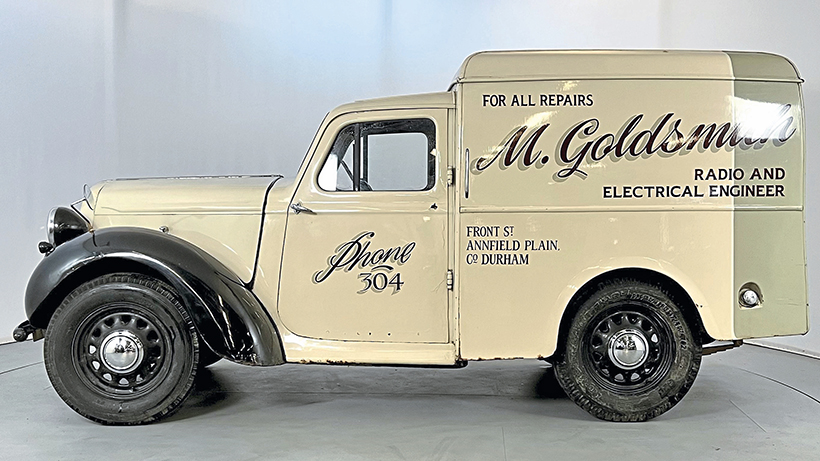
Lettered-out as a period electrician’s van.
The petrol gauge was refusing to register; and took a while to get sorted out, and the original seats only had their backs intact, so, as a temporary measure, two plush ones from a Mini Clubman were installed.
My very sincere thanks went to Bradley for arranging the photographic session, despite continuous rain on a dismal Bank Holiday Monday. He was a member of the Lakeland Historic Car Club and had several other classic vehicles. One detail about the rear doors puzzled me for some time; the handle seems to be on the wrong door! Since he didn’t have the originals; it is understandable.
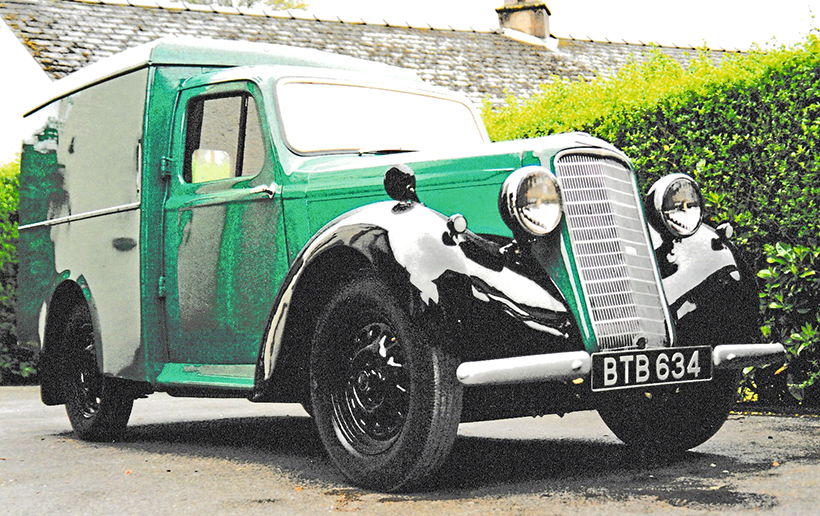
The magnificently restored van in 1979.
Later, in October 2009, following Bradley Wilson’s untimely death, his entire collection was sold by the family; put in the local auctions (C. L. Hodgson) at the Preston Patrick Memorial Hall, Crooklands, near Kendal, as lot no. 102. Auctioneer’s assistant, Jim Newby, had placed a back copy of Vintage Commercial Vehicles magazine with the original article in it – and was dismayed when someone stole it. Sold to a local man, Frank Sanderson for £4,500, he had moved into the town, bought and renovated an old school and opened it as a tea shop: ‘The Old School Gallery and tea rooms’, situated close to Crooklands filling station on the A684 just off M6 J37. The van stood outside as added attraction.
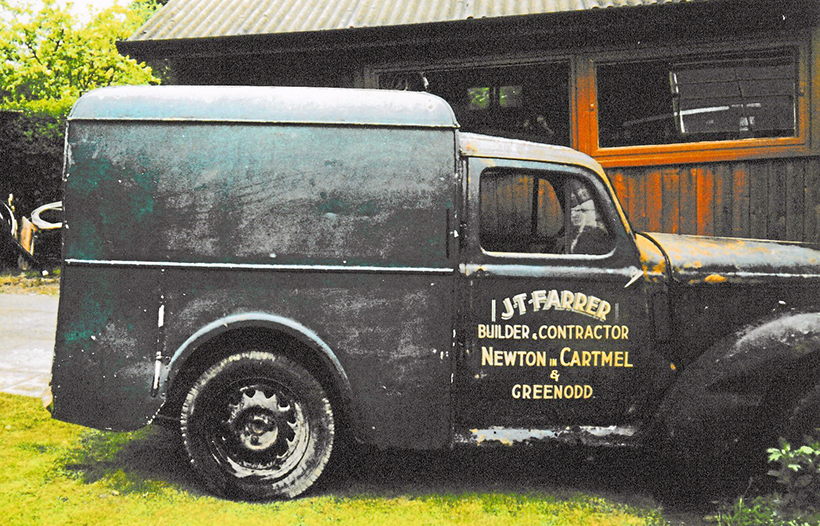
The sad-looking van in its as-found condition.
Later still, in April 2015, it was put through an on-line auction by Heathcote Antiques of Crosshills, Keighley, to become part of the Beamish Museum Collection. repainted in light cream (the dark green was considered too dull; although authentically correct for the period). The museum likes to use service vehicles that are historically correct for the period (in this case the 1950s) so chose the lighter, brighter shade. It was liveried out as a radio and electrical service van to be used by the on-site electrician, Michael Goldsmith, and with his permission, adopted his name but a fictional, local address – Front Street, Annfield Plain, County Durham, phone 304. After some years of working in this role, it became clear it was in need of a thorough overhaul, additionally it had been out of use for some time: including the Covid lockdown period, and the team of electricians had grown as had its work schedule. So, it was decided to move it on and it went to a dealer in 2022 (it was never an exhibit) – the museum does not sell them. Beamish is a living museum; the old buildings are genuine ones rescued from being demolished; carefully dismantled and rebuilt at the museum. Additionally, local volunteers dressed in period costume, take-on suitable roles to fit in with the buildings’ themes – the fish n’ chip shop actually cooks chips, all well worth a visit.
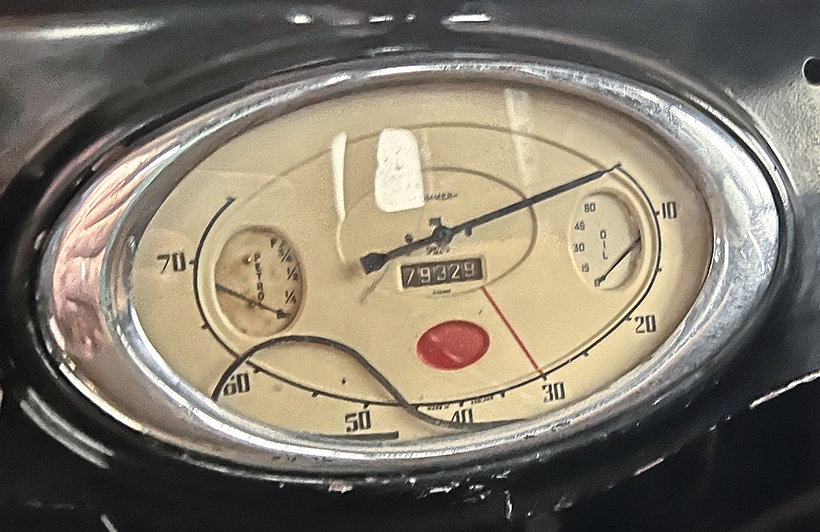
Very attractively styled speedo and gauges.
In March 2023, it was sold at auction by WB & Sons of Newcastle, a family business run by three brothers, James, Toby, and Charlie. that is doing very well; achieving sales of classic vehicles for record prices. As lot 111 it achieved a hammer price of £4,200, My sincere thanks to auctioneers WB & Sons, and Beamish Museum.
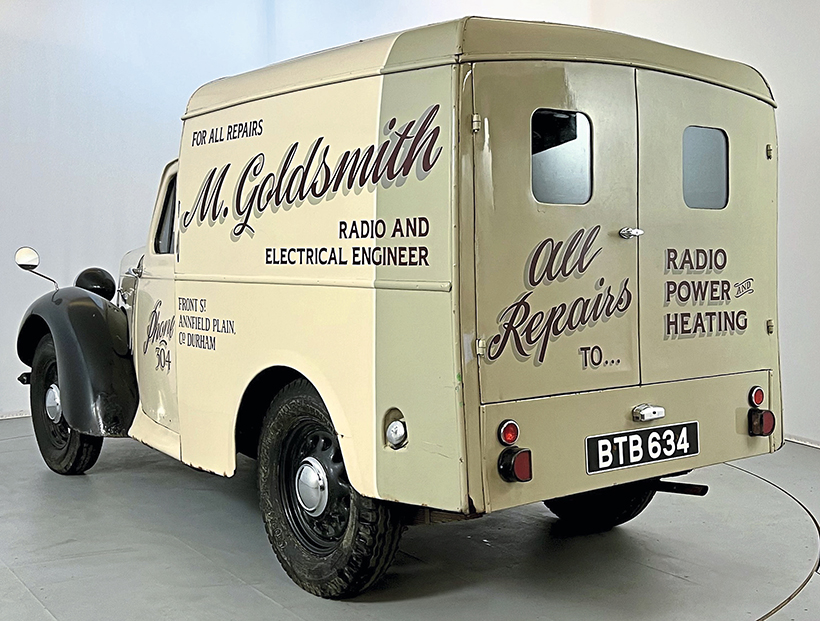
The rear box body allows more carrying space.
*Sparky: coal miners face danger every shift from roof falls and methane gas explosions. In an act of defiance and dark humour, miners in the North-East of England always, affectionately, called their underground electrician, Sparky – because if he should cause one, then, that would be the last thing everyone saw!
This feature comes from the latest issue of Heritage Commercials, and you can get a money-saving subscription to this magazine simply by clicking HERE
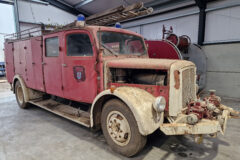
Previous Post
BARTON FAMILY (SEABEA TRANSPORT) AUCTION
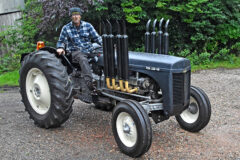
Next Post
This is certainly no ordinary 1953 TE-D 20!



